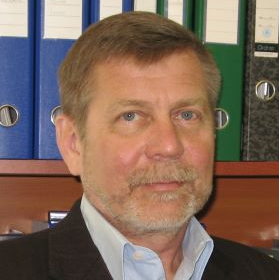A Commemorative Special Issue Honoring Professor Donald Truhlar
A special issue of Molecules (ISSN 1420-3049). This special issue belongs to the section "Computational and Theoretical Chemistry".
Deadline for manuscript submissions: closed (30 June 2022) | Viewed by 33237
Special Issue Editors
Interests: organosilicon polymer chemistry; reaction mechanisms in organometallic chemistry; computational chemistry; molecular modeling
Special Issues, Collections and Topics in MDPI journals
Interests: isotope effects; mechanisms of chemical and enzymatic reactions; enzyme inhibition; isotopic fractionation; isotope-ratio mass spectrometry; computational chemistry
Special Issues, Collections and Topics in MDPI journals
Special Issue Information
Dear Colleagues,
This Special Issue of Molecules, "A Commemorative Special Issue Honoring Professor Donald Truhlar", presents the recent developments and applications in the rapidly expanding and exciting field of theoretical chemistry and molecular modeling. This issue is intended to honor Professor Donald G. Truhlar in recognition of his outstanding achievements in this field.
Professor Truhlar is undoubtedly one of the most eminent scientists in the area of computational and theoretical chemistry. He is known for his contributions to an extremely wide range of chemical problems, such as the theoretical kinetics and dynamics of chemical reactions; variational transition state theory and tunneling; thermochemistry and molecular interactions; the design of new functionals for applications of density functional theory in chemistry and physics; the development of more accurate and efficient methods for the treatment of solvation effects; new tools for simulations involving electronically excited states and related problems such as photodissociation, photocatalysis, and spectroscopy; enzymatic and organometallic catalysis. He is the author of more than 1650 papers published in international journals, with a total of over 150,000 citations and an h-index of 161 (according to Web of Science, 2021).
The purpose of this Special Issue is to present state-of-the-art examples of applications of theoretical chemistry methods for solving chemical problems. Papers concerning the progress in the theoretical treatment of large chemical systems are particularly welcome.
Prof. Dr. Marek Cypryk
Prof. Dr. Piotr Paneth
Guest Editors
Manuscript Submission Information
Manuscripts should be submitted online at www.mdpi.com by registering and logging in to this website. Once you are registered, click here to go to the submission form. Manuscripts can be submitted until the deadline. All submissions that pass pre-check are peer-reviewed. Accepted papers will be published continuously in the journal (as soon as accepted) and will be listed together on the special issue website. Research articles, review articles as well as short communications are invited. For planned papers, a title and short abstract (about 100 words) can be sent to the Editorial Office for announcement on this website.
Submitted manuscripts should not have been published previously, nor be under consideration for publication elsewhere (except conference proceedings papers). All manuscripts are thoroughly refereed through a single-blind peer-review process. A guide for authors and other relevant information for submission of manuscripts is available on the Instructions for Authors page. Molecules is an international peer-reviewed open access semimonthly journal published by MDPI.
Please visit the Instructions for Authors page before submitting a manuscript. The Article Processing Charge (APC) for publication in this open access journal is 2700 CHF (Swiss Francs). Submitted papers should be well formatted and use good English. Authors may use MDPI's English editing service prior to publication or during author revisions.
Keywords
- computational chemistry
- density functionals
- solvation
- tunneling
- multiscale calculations
- kinetics
- catalysis
Benefits of Publishing in a Special Issue
- Ease of navigation: Grouping papers by topic helps scholars navigate broad scope journals more efficiently.
- Greater discoverability: Special Issues support the reach and impact of scientific research. Articles in Special Issues are more discoverable and cited more frequently.
- Expansion of research network: Special Issues facilitate connections among authors, fostering scientific collaborations.
- External promotion: Articles in Special Issues are often promoted through the journal's social media, increasing their visibility.
- e-Book format: Special Issues with more than 10 articles can be published as dedicated e-books, ensuring wide and rapid dissemination.
Further information on MDPI's Special Issue polices can be found here.







